Mastering Generative AI with OpenAI
Understanding Prompt Engineering
Key Types of Prompts Used with LLMs
Prompt engineering is essential for guiding large language models (LLMs) toward precise, relevant, and unbiased outputs. In this article, we explore seven core prompt categories—each optimized for different use cases and outcomes.
![]()
| Prompt Type | Purpose | Example Use Case |
|---|---|---|
| Explicit | Clearly defines format & content | Story writing, summaries |
| Conversational | Simulates chat with follow-ups | Interactive Q&A, customer support |
| Instructional | Provides structured requirements | Blog posts, reports |
| Context-Based | Supplies background then asks a question | Travel plans, project planning |
| Open-Ended | Broad queries for creative or comprehensive answers | Opinion pieces, research overviews |
| Bias-Mitigating | Directs neutrality and factual balance | Sensitive topics, policy analysis |
| Code-Generation | Generates programming snippets | Utility functions, scripts |
1. Explicit Prompts
Explicit prompts specify the exact format, style, and content you need. The more details you provide, the closer the output matches your expectations.
Example: “Write a short story about a young girl who discovers a magical key that unlocks a hidden door to another world.”

2. Conversational Prompts
These prompts mimic a chat dialogue, allowing follow-up questions, clarifications, or variations—just like talking to an assistant.
User: “Can you tell me a funny joke about cats?”
Assistant: “Why did the cat sit on the computer? Because there were too many cheetahs!”
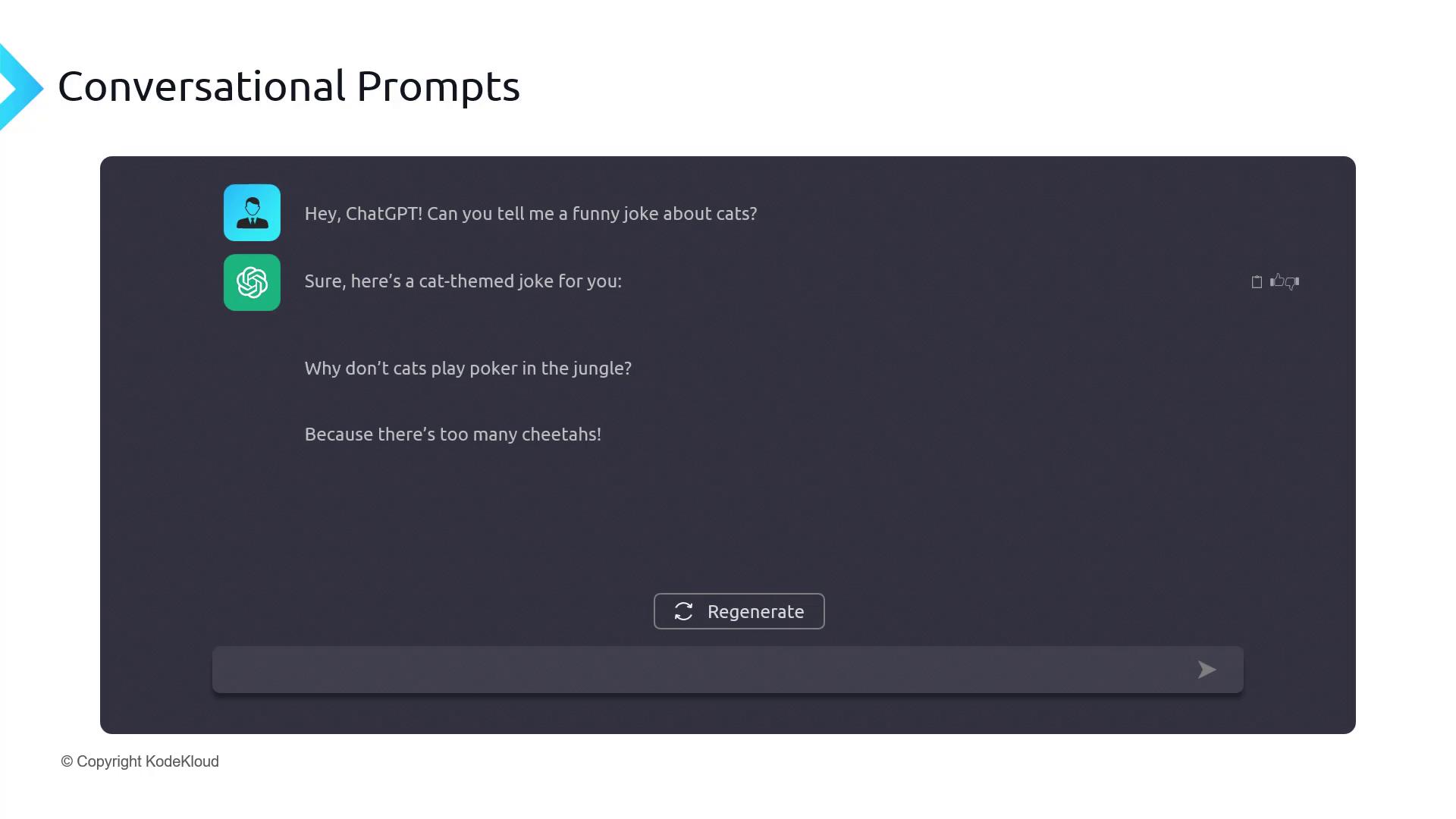
3. Instructional Prompts
Also known as prescriptive prompts, these guide the model with explicit structure—sections, tone, length, or formatting rules.
Example: “Write a detailed blog post discussing the benefits and drawbacks of renewable energy. Structure it with an introduction, a benefits section, a drawbacks section, and a conclusion.”
4. Context-Based Prompts
Start by supplying background information or a scenario, then pose a targeted question. This combination yields richer, more relevant responses.
Context:
“I’m planning a week-long trip to Paris next month.”
Prompt:
“Suggest must-visit tourist attractions and local restaurants based on my itinerary.”
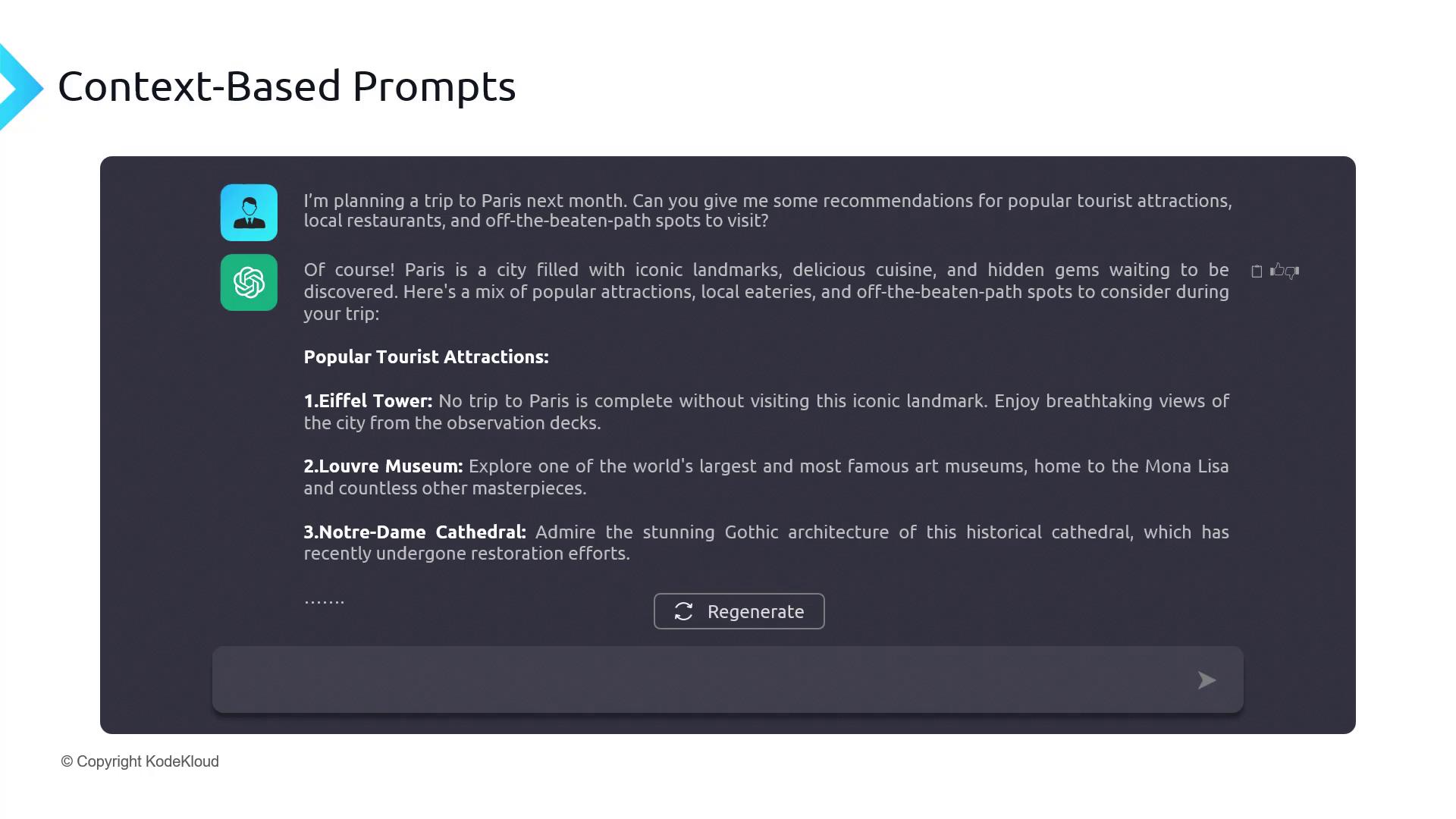
5. Open-Ended Prompts
Open-ended prompts are intentionally broad, inviting creativity or comprehensive exploration without tight constraints.
Example: “What is the impact of AI on society?”
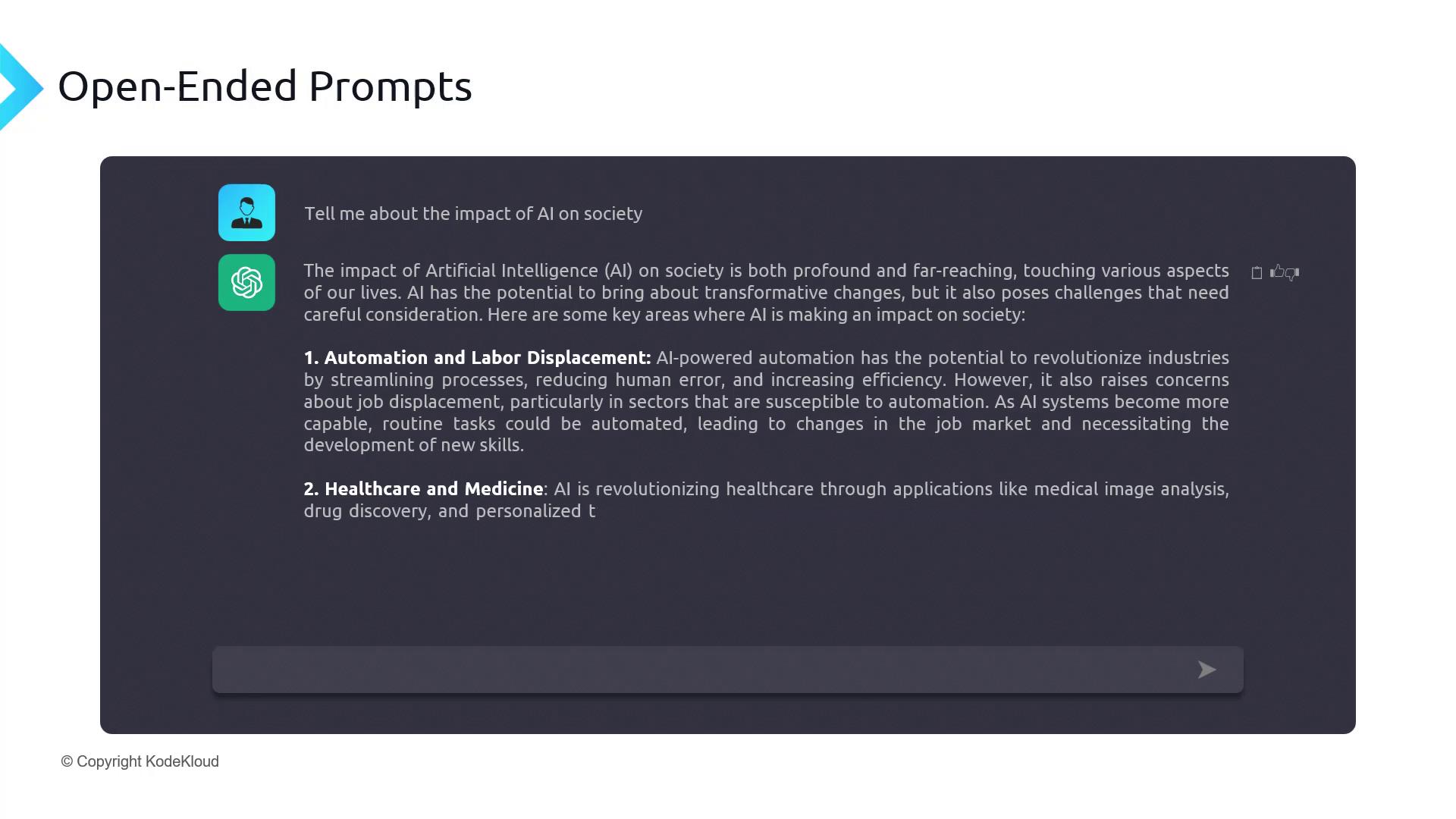
6. Bias-Mitigating Prompts
To counteract biases in training data, explicitly instruct the model to present balanced, fact-based information and avoid partisanship.
Warning
When covering sensitive or controversial topics, always ensure your prompt requests neutrality and evidence-based responses to minimize unintended bias.
Example: “Discuss caste-based reservations in India. Avoid favoring any group or ideology. Present factual information supported by reliable sources, striving for inclusivity and fairness.”
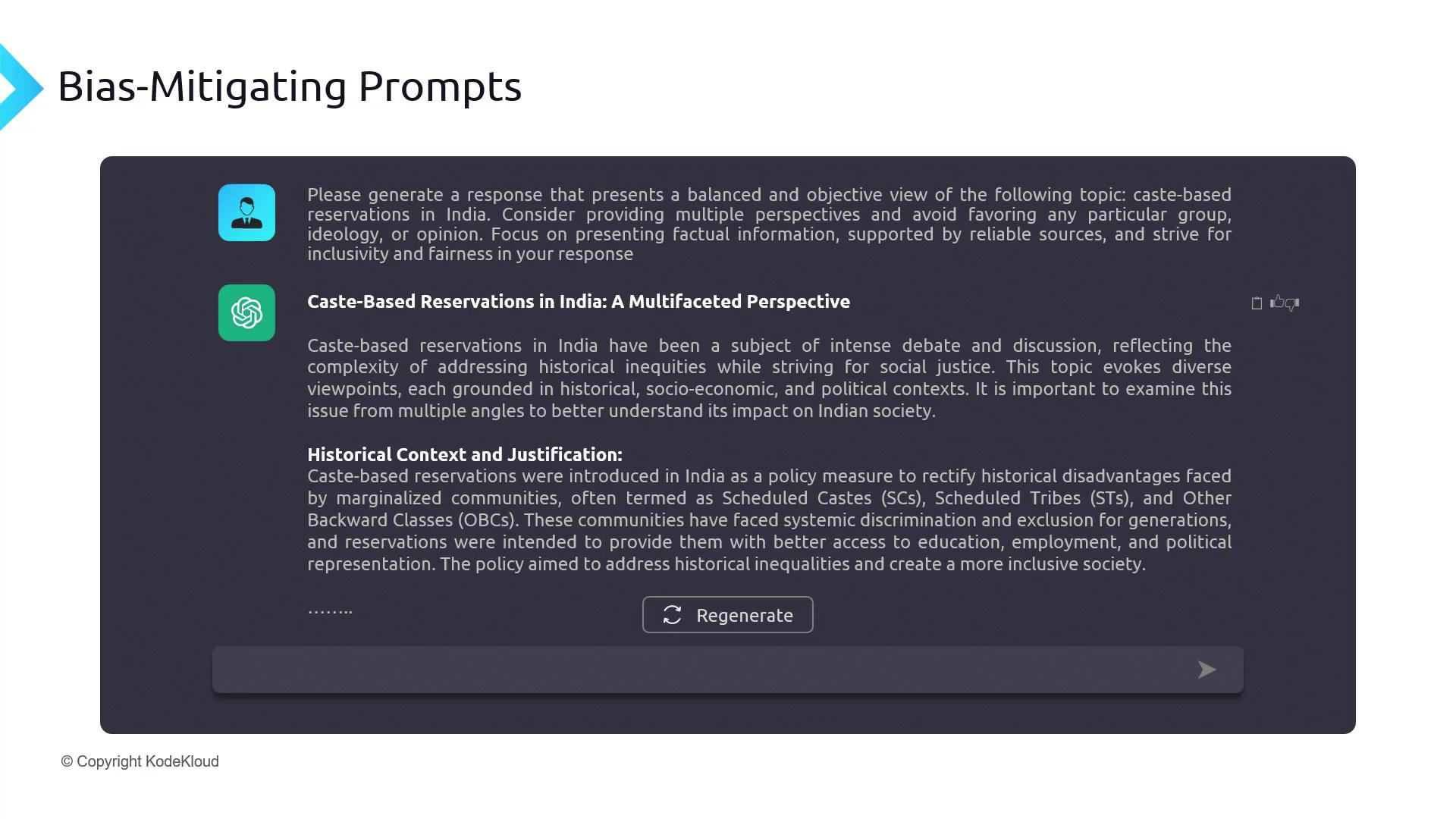
7. Code-Generation Prompts
LLMs excel at producing code snippets, algorithms, or scripts. Simply describe the functionality you need, and then test and refine the output.
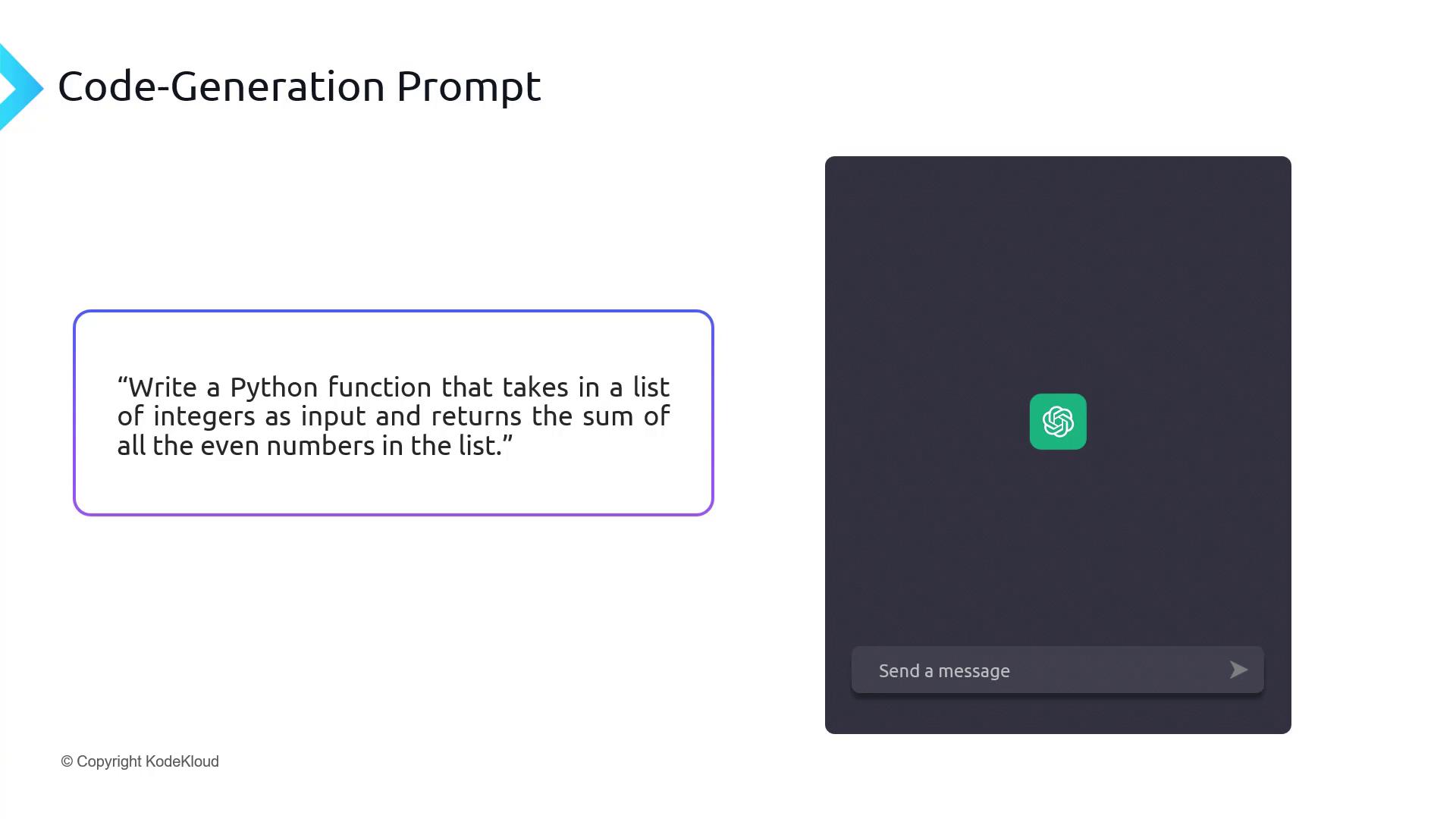
Example Python function:
def sum_even_numbers(numbers):
even_sum = 0
for num in numbers:
if num % 2 == 0:
even_sum += num
return even_sum
# Example usage
input_list = [2, 5, 8, 10, 3, 6]
result = sum_even_numbers(input_list)
print("Sum of even numbers:", result)
Note
Always review and test generated code for edge cases, performance, and security considerations before using it in production.
Summary
We’ve covered the seven primary prompt types—explicit, conversational, instructional, context-based, open-ended, bias-mitigating, and code-generation. By selecting and refining these prompts, you can significantly improve LLM accuracy, relevance, and fairness. Experiment with each category to discover what works best for your applications.
Links and References
Watch Video
Watch video content